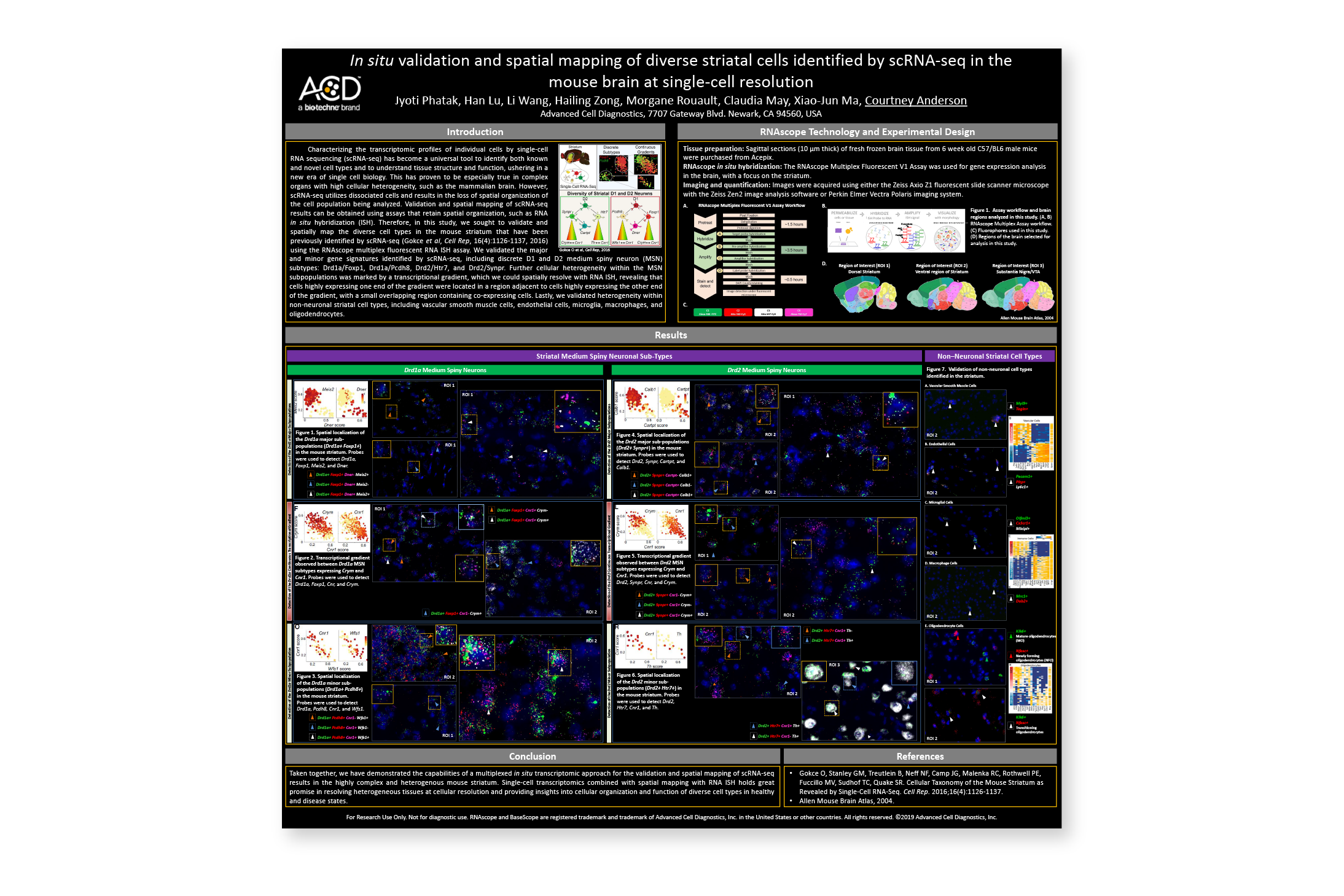Characterizing the transcriptomic profiles of individual cells by single-cell RNA sequencing (scRNA-seq) has become a universal tool to identify both known and novel cell types and to understand tissue structure and function, ushering in a new era of single cell biology. This has proven to be especially true in complex organs with high cellular heterogeneity, such as the mammalian brain. However, scRNA-seq utilizes dissociated cells and results in the loss of spatial organization of the cell population being analyzed. Validation and spatial mapping of scRNA-seq results can be obtained using assays that retain spatial organization, such as RNA in situ hybridization (ISH). Therefore, in this study, we sought to validate and spatially map the diverse cell types in the mouse striatum that have been previously identified by scRNA-seq (Gokce et al, Cell Rep, 16(4):1126-1137, 2016) using the RNAscope multiplex fluorescent RNA ISH assay.
Taken together, we have demonstrated the capabilities of a multiplexed in situ transcriptomic approach for the validation and spatial mapping of scRNA-seq results in the highly complex and heterogenous mouse striatum. Single-cell transcriptomics combined with spatial mapping with RNA ISH holds great promise in resolving heterogeneous tissues at cellular resolution and providing insights into cellular organization and function of diverse cell types in healthy and disease states.
